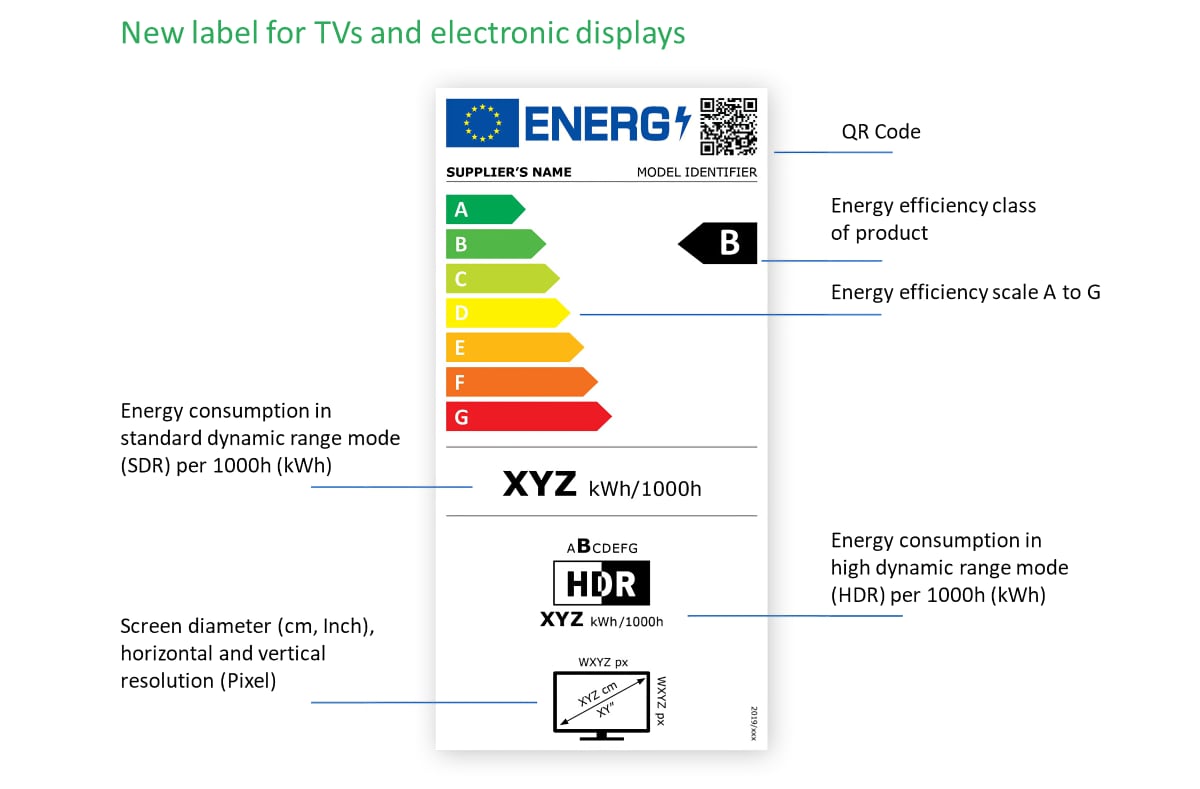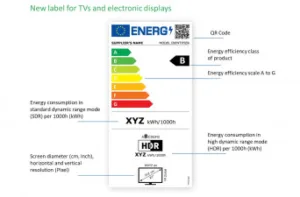The 8K Association has issued a ‘call for action’ over new TV energy consumption regulations that are due to be implemented in the EU in March and which could mean that new 8K sets cannot be sold in the region.
The regulations were set in place some time ago and although the levels of energy set for UltraHD and FullHD sets were based on sets that were being sold at the time, the level for 8K was set to be the same as for UltraHD. That’s a real challenge for the industry as both OLED and LCD technologies use more power in the display and the processing needed for 8K signals also uses more power.
The Regulations say that they should be reviewed by December this year, but as far as the 8K Association knows, it said in an article, there is no review date set. On the face of it, then, new 8K sets may not be introduced after March unless they meet the power requirements.
A Hot Topic at IFA
This was a hot topic at the IFA show among TV brands and panel suppliers. I did hear a rumour that one TV brand had been able to get certification, but not in a straightforward way. When the EU power regulations were first developed, the Commission wanted to minimise the power levels in use in the home. At that time, sets were typically shipped in ‘vivid’ or ‘demo’ mode with high brightness and saturation. This was to ensure the biggest impact in store if the sets were used for demonstrations. However, this mode typically used more power than regular viewing modes, so the Commission mandated that the ‘out-of-box’ setting was to be used for the energy test. This gave a disincentive for brands to ship in vivid mode and as far as I am aware, they switched their shipping modes. This had the desired effect of reducing energy consumption because many less tech-savvy consumers did not adjust there sets but left them in their ‘out of box’ condition.
 EU’S NEW ENERGY LABEL LISTS BOTH SDR AND HDR CONSUMPTION. PHOTO: LABEL 2020
EU’S NEW ENERGY LABEL LISTS BOTH SDR AND HDR CONSUMPTION. PHOTO: LABEL 2020
The rumour I heard was that one maker has been able to meet the March regulations by the simple expedient of shipping the sets with a low brightness mode. This combined with a FALD backlight keeps power consumption to a minimum, but doesn’t really seem ‘in the spirit of the regulations’. The regulations specify that a set must be set to “not be less than 220 cd/m² or, if the electronic display is primarily intended for close viewing by a single user, not less than 150 cd/m².”
However, if you have an HDR set with 2,000 cd/m² of peak output, that’s a lot less than the full brightness.
(It’s a while since I had looked at the regulations and was intrigued to see that the Commission specifically outlaws firmware that detects the test conditions and alters its behaviour accordingly. I remember a big TV brand getting in trouble for this in the US a number of years ago!)
Another comment I have heard from those on the manufacturing side was that the EU has been making increasingly stringent demands in terms of power consumption. However, those demands have tended to be matched by changes in technology, from CRTs to LCDs and then from CCFL backlights to LEDs. LED backlights have also switched from global backlights to some form of dynamic backlighting. However, in the last few years, there has not been such a significant change that could deliver the better efficiency that the Commission would like to see. TVs take a measurable share of the EU’s power consumption (3% was referenced in the original 2009 regulations) so it’s reasonable to try to reduce this, but it’s hard to do it if there are not technological breakthroughs.
Regulation Review before Christmas
If you look at the regulations, you can see that the Commission is obliged to review them before 25th December 2022. The 8K Association said that it was not aware of any review dates that had been set or reviews that had been made.
I contacted the ‘Digital Europe’ trade association, based in Brussels and recognised by the Commission as a competent body in representing the industry. I asked if there was an official statement on the organisation’s position on the 8K issue, or whether they knew of regulations. Despite an acknowledgement of my enquiry, I had received no material response at press time.
Place on the Market
The regulations state that makers cannot ‘place on the market’ sets that do not meet the regulations. Normally, as I understand it (and I’m no lawyer qualified for interpreting EU law!), this means making products as a manufacturer. Channels will be able to sell existing inventory, but makers will not be allowed to sell them more, even of existing models that were legal before March 2023.
TV Prices
TV prices are currently on the way down as panel makers try to fill their fabs and ease the problems of the current Crystal Cycle, so this Christmas might be a very good time to buy an 8K set. Although there is not much native 8K content, almost every review of 8K sets that I have seen in the last few months has highlighted that “Even if you don’t care about 8K, this is a great TV”. (Why 8K TV is Going to Develop) (BR)

